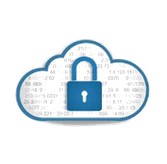Securing Power BI Report Pages
Every now and then I get a question about how to secure Power BI report pages. A business analyst has created a multi-page report that requires limited access to some sensitive information in one or more report pages. I always cringe at this idea and recommend securing the data instead. That’s because report-level or dashboard-level security can be easily compromised. For example, if the user has permissions to use Analyze in Excel, they will surely bypass report security and get access to all the data. The same will happen if they use Report Builder or connect a third-party tool to the published Power BI dataset. Instead, you should apply row-level security (RLS) to protect the data. Currently, Power BI doesn’t let you secure report pages but if you must apply report or visual security, you have options:
- Break the report into two set of reports: one with open access and another with “secure” pages. Share the report with the secure pages with the people who can access it or publish it to a separate workspace.
- Add a hidden page-level or report-level slicer that filters on a DAX measure. The DAX measure can check the user identity using the USERPRINCIPALNAME() function, so the slicer doesn’t return any values if the interactive user is not authorized. Granted, a better (and preferred) way to achieve this could be to apply RLS but RLS will restrict data to all visuals where as a slicer can filter only selected visuals.





